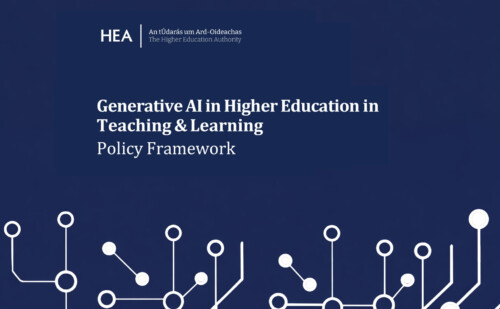Latest Student Progression data reveals vast majority of new entrants progress to the following academic year
By James Holohan
Posted: 9 April, 2025

Almost 90% of 2022/23 new entrants progress to the following academic year, while the vast majority of entrants go on to complete their qualifications in the expected time.
This is according to the latest Student Progression Report, compiled by the Higher Education Authority and released today.
The 2025 report expands on the scope of the analyses used in previous years. A student is deemed ‘progressed’ if they are present in the following academic year, and non-progressed if not. In addition, the HEA can now better track progression across HEIs, and ‘transfer’ students are now reflected in the data.
The analysis found:
- The overall rate of progression within HEIs for 2022/2023 new entrants is 87%. The pre-Covid average rate was 88% (2016/2017 to 2018/2019).
- While 87% of year 1 students progressed within their own institution, a further 2% (on average) were recorded as present in another institution in the following academic year. If these ‘transfer’ students are included, there is an overall rate of 89%.
- The overall non-progression rate for 2022/2023 new entrants is 11% – down from 13% for the 2021/2022 academic year.
- In general, females continue to have lower rates of non-progression than males, while students from disadvantaged backgrounds and those in receipt of a student grant have higher rates of non-progression.
- 78% of new entrants from the academic years 2016/2017 to 2018/2019 have gained an award as of 2023.
- The average time to completion of Higher Certificates, Ordinary Degrees and Honours Degrees are 2.1, 3.2 and 3.9 years respectively, suggesting that the overwhelming majority complete the award in the expected time.
Minister for Further and Higher Education, Research, Innovation and Science James Lawless TD said:
“I am delighted to see the rise in progression rates among our higher education students. After the challenges faced over the past few years, this achievement is a testament to the resilience of our students and the dedication of the higher education staff who educate and support them. I will continue to ensure our students have the necessary supports to thrive in their studies.”
Higher Education Authority CEO, Dr Alan Wall, said it is positive to see progression rates are returning to pre-Covid levels.
“The quality of our data analysis is consistently improving and this year we can track the progression of students in receipt of a SUSI grant, those that transfer to another HEI and those students that graduate with a different qualification than they entered higher education with. This provides a richer evidence base from which policy can be developed”, he said.
The analysis revealed that the highest rates of completion are in the field of Education, with 93% of new entrants on average between 2016/2017 and 2018/2019 gaining an award as of 2023. The lowest rates of completion are in ICT, with an average completion rate of 64% for the same three years.
The majority of students do progress, regardless of entry route or prior educational attainment. While, in general, those with higher leaving cert points tend to have higher rates of progression, nearly 50% of entrants with the lowest level of points progress to the following year. Students entering on the basis of leaving certificate, DARE or HEAR have non-progression rates of 10-11% while students from other entry routes have slightly higher than average non-progression rates.
This year the HEA have established a Policy Forum on progression which brings together the higher education institutions to develop solutions to address non-progression and share good practice.
You can view the report on the HEA website.


